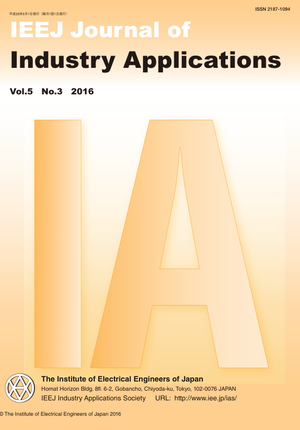Optimization of Asymmetric Acceleration Waveform for Haptic Device Driven by Two-Degree-of-Freedom Oscillatory Actuator
Optimization of Asymmetric Acceleration Waveform for Haptic Device Driven by Two-Degree-of-Freedom Oscillatory Actuator
カテゴリ: 論文誌(論文単位)
グループ名: 【D】産業応用部門(英文)
発行日: 2016/05/01
タイトル(英語): Optimization of Asymmetric Acceleration Waveform for Haptic Device Driven by Two-Degree-of-Freedom Oscillatory Actuator
著者名: Masayuki Kato (Department of Adaptive Machine Systems, Graduate School of Engineering, Osaka University), Junya Nitta (Department of Adaptive Machine Systems, Graduate School of Engineering, Osaka University), Katsuhiro Hirata (Department of Adaptive Mach
著者名(英語): Masayuki Kato (Department of Adaptive Machine Systems, Graduate School of Engineering, Osaka University), Junya Nitta (Department of Adaptive Machine Systems, Graduate School of Engineering, Osaka University), Katsuhiro Hirata (Department of Adaptive Machine Systems, Graduate School of Engineering, Osaka University)
キーワード: asymmetric acceleration,finite-element methods,haptic devices,genetic algorithm,two degree of freedom (2-DOF) oscillatory actuator
要約(英語): Mobile haptic devices are being studied extensively because they have great potential for use as information transfer devices. Amemiya et al. proposed a method for haptic feedback with a slider-crank mechanism that uses an asymmetrical drive. We have recently proposed a haptic device that uses a small two degree-of-freedom (2-DOF) oscillatory actuator. Using this actuator, we were able to reproduce the same asymmetric acceleration as the one achieved by Amemiya. However this waveform is dependent on the mechanical structure of the slider-crank mechanism and thus it is not necessary to use it for our actuator. In this paper, first, the relationship of the properties of the asymmetric acceleration to haptic perception is investigated by conducting experiments on volunteers. Next, by applying a genetic algorithm to the optimization method, an optimized asymmetric acceleration waveform is created. The effectiveness of the method is demonstrated by the power consumption of our actuator and the ratio of correct answers given by the volunteers.
本誌: IEEJ Journal of Industry Applications Vol.5 No.3 (2016)
本誌掲載ページ: 215-220 p
原稿種別: 論文/英語
電子版へのリンク: https://www.jstage.jst.go.jp/article/ieejjia/5/3/5_215/_article/-char/ja/
受取状況を読み込めませんでした


